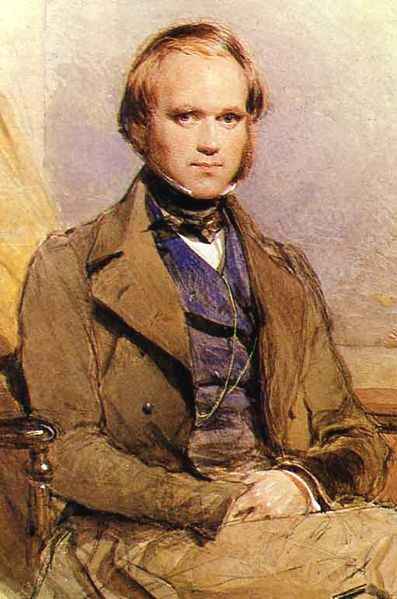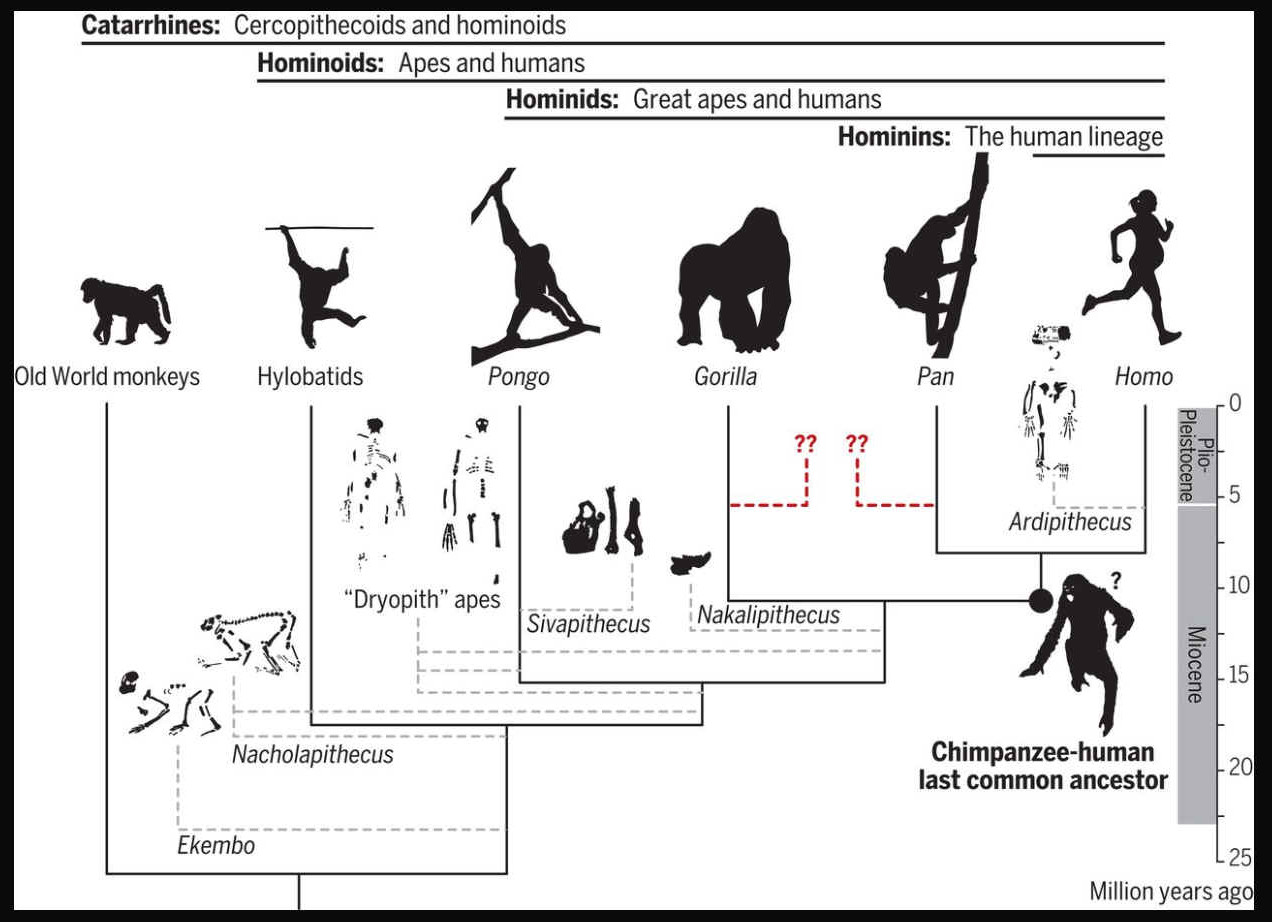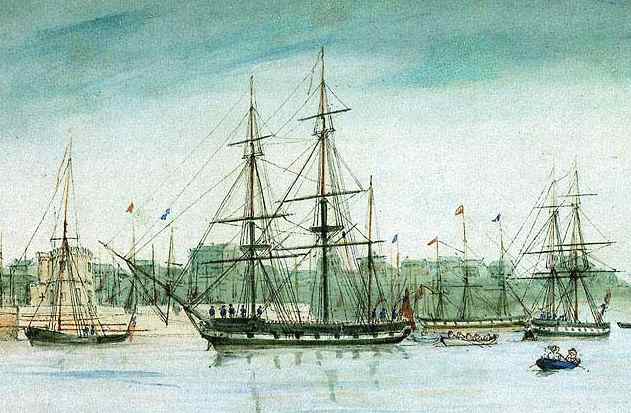|

CHARLES
DARWIN Charles
Darwin in famous for his book on the evolution of species by
natural selection, or, origins. We hold that intelligence is
a feature of much of life
on earth, where animals have to make choices to better
survive. In the case of monkeys or apes, they need to eat.
In so doing they have to choose nuts, berries and fruits.
They also have to recall where they found the best crop of
such delights. Hunting and killing also requires choices to
be made. Which path to choose to catch their prey, and of
course remembering where to find animals to kill.
These
ingredients, as they ratchet up, led to apes becoming tool
users, then standing upright, to be able to travel longer
distances and carry weapons. It was thus natural that the
most adaptable species evolved in greater numbers, to
colonize the world. Where other animals, dependent on legs
for locomotion, would not be able to survive in conditions
too far removed from where they evolved to take advantage of
local produce.
Thus
knowledge as learned experiences became important, and for
that our brain capacity and skill with tools needed to
increase, as one species competed with another for
dominance. As weapons technology improved, metals were used
in place of flints. With a knowledge of metallurgy humans
could branch out to make covered wagons for pioneers, then
cars to replace horses, and finally rockets. All the while
increasing our ability to handle information and decipher
the messages of others, in times of war.
In
parallel, medicine helped to make us live longer. And
finally, we cracked the human genome, making it possible to
artificially replicate a human, or even splice genes. Since,
we've been selectively breeding animals for centuries.
It
is only natural then, that humans will eventually control
their own development, giving rise to boutique babies and
clones, to extend the life of people rich enough to afford
replication. Or, in the case of this fictional John
Storm adventure, bringing back Cleopatra
from the dead, to join with the living. The horrors of World
War Two, providing the accelerant (though grossly
unethical) from which Josef
Mengele flourished genetically.
LOGICAL
CHAIN OF MAN'S DEVELOPMENT
Australopithecus
A. africanus
Kenyanthropus
Paranthropus robustus
Homo habilis
H. erectus
H. heidelbergensis
Homo
neanderthalensis
Homo sapiens
Homo Sapiens Superior (Kanis
Rex)
NATIONAL GEOGRAPHIC
Ideas aimed at explaining how organisms change, or evolve, over time date back to Anaximander of Miletus, a Greek philosopher who lived in the 500s B.C.E. Noting that human babies are born helpless, Anaximander speculated that humans must have descended from some other type of creature whose young could survive without any help. He concluded that those ancestors must be fish, since fish hatch from eggs and immediately begin living with no help from their parents. From this reasoning, he proposed that all life began in the sea.
Anaximander was correct; humans can indeed trace our ancestry back to fish. His idea, however, was not a theory in the scientific meaning of the word, because it could not be subjected to testing that might support it or prove it wrong. In science, the word “theory” indicates a very high level of certainty. Scientists talk about evolution as a theory, for instance, just as they talk about Einstein’s explanation of gravity as a theory.
A theory is an idea about how something in nature works that has gone through rigorous testing through observations and experiments designed to prove the idea right or wrong. When it comes to the evolution of life, various philosophers and scientists, including an eighteenth-century English doctor named Erasmus Darwin, proposed different aspects of what later would become evolutionary theory. But evolution did not reach the status of being a scientific theory until Darwin’s grandson, the more famous Charles Darwin, published his famous book On the Origin of Species. Darwin and a scientific contemporary of his, Alfred Russel Wallace, proposed that evolution occurs because of a phenomenon called natural selection.
In the theory of natural selection, organisms produce more offspring than are able to survive in their environment. Those that are better physically equipped to survive, grow to maturity, and reproduce. Those that are lacking in such fitness, on the other hand, either do not reach an age when they can reproduce or produce fewer offspring than their counterparts. Natural selection is sometimes summed up as “survival of the fittest” because the “fittest”
organisms - those most suited to their environment - are the ones that reproduce most successfully, and are most likely to pass on their traits to the next generation.
This means that if an environment changes, the traits that enhance survival in that environment will also gradually change, or evolve. Natural selection was such a powerful idea in explaining the evolution of life that it became established as a scientific theory. Biologists have since observed numerous examples of natural selection influencing evolution. Today, it is known to be just one of several mechanisms by which life evolves. For example, a phenomenon known as genetic drift can also cause species to evolve. In genetic drift, some
organisms - purely by chance - produce more offspring than would be expected. Those organisms are not necessarily the fittest of their species, but it is their genes that get passed on to the next generation.

ARTIFICIAL
SELECTION
Darwin chose the term "natural selection" to be in contrast with "artificial selection," in which animal breeders select for particular traits that they deem desirable. In natural selection, it's the natural environment, rather than a human being, that does the selecting.
Put simply, the theory of evolution by means of natural selection can be described as "descent with modification," said Briana Pobiner (opens in new tab), an anthropologist and educator at the Smithsonian National Museum of Natural History in Washington, D.C., who specializes in the study of human origins. The theory is sometimes described as "survival of the fittest," but that characterization can be misleading, Pobiner said. Here, "fitness" refers not to an organism's strength or athleticism but rather its ability to survive and reproduce.
Natural selection can alter a species in small ways, causing a population to change color or size over the course of several generations, according to The Natural History Museum (opens in new tab). When this process happens over a relatively short period of time and in a species or small group of organisms, scientists call it "microevolution."
But when given enough time and accumulated changes, natural selection can create entirely new species, a process known as "macroevolution," according to Derek Turner and Joyce C. havstad in "The Philosophy of Macroevolution (opens in new tab)." This long-term process is what turned dinosaurs into birds, amphibious mammals (such as an animal called Indohyus) into whales and a common ancestor of apes and humans into the people, chimps and gorillas we know today.
SEXUAL
SELECTION - SURVIVAL OF THE FITTEST
Darwin also described a form of natural selection that depends on an organism's success at attracting a mate — a process known as sexual selection, according to Nature Education. The colorful plumage of peacocks and the antlers of male deer are both examples of traits that evolved under this type of selection.
And of course, rutting. Fighting to prove strength. These
days translating to wealth. And wealth is linked to mental
prowess. Mostly. The ability to handle complex negotiations.
Write a spectacular film script. Act, dance or sing. All of
which are attractive to a mate.

HMS
BEAGLE
OTHER
FACTORS - GENETIC DRIFT
Natural selection isn't the only mechanism by which organisms evolve, she said. For example, genes can be transferred from one population to another when organisms migrate or immigrate — a process known as gene flow. And the frequency of certain genes can also change at random, which is called genetic drift.
The reason Jean-Baptiste Lamarck's theory of evolution is generally wrong is that acquired characteristics don't affect the DNA of sperm and eggs. A giraffe's gametes, for example, aren't affected by whether it stretches its neck; they simply reflect the genes the giraffe inherited from its parents. But as Quanta reported (opens in new tab), some aspects of evolution are Lamarckian.
For example, a Swedish study published in 2002 in the European Journal of Human Genetics (opens in new tab) found that the grandchildren of men who starved as children during a famine passed on better cardiovascular health to their grandchildren. Researchers hypothesize that although experiences such as food deprivation don't change the DNA sequences in the gametes, they may result in external modifications to DNA that turn genes "on" or "off."
Such changes, called epigenetic changes, do not modify the actual DNA sequence itself. For instance, a chemical modification called methylation can affect which genes are turned on or off. Such epigenetic changes can be passed down to offspring. In this way, a person's experiences could affect the DNA he or she passes down, analogous to the way Lamarck thought a giraffe craning its neck would affect the neck length of its offspring.
REFERENCES
https://

|



